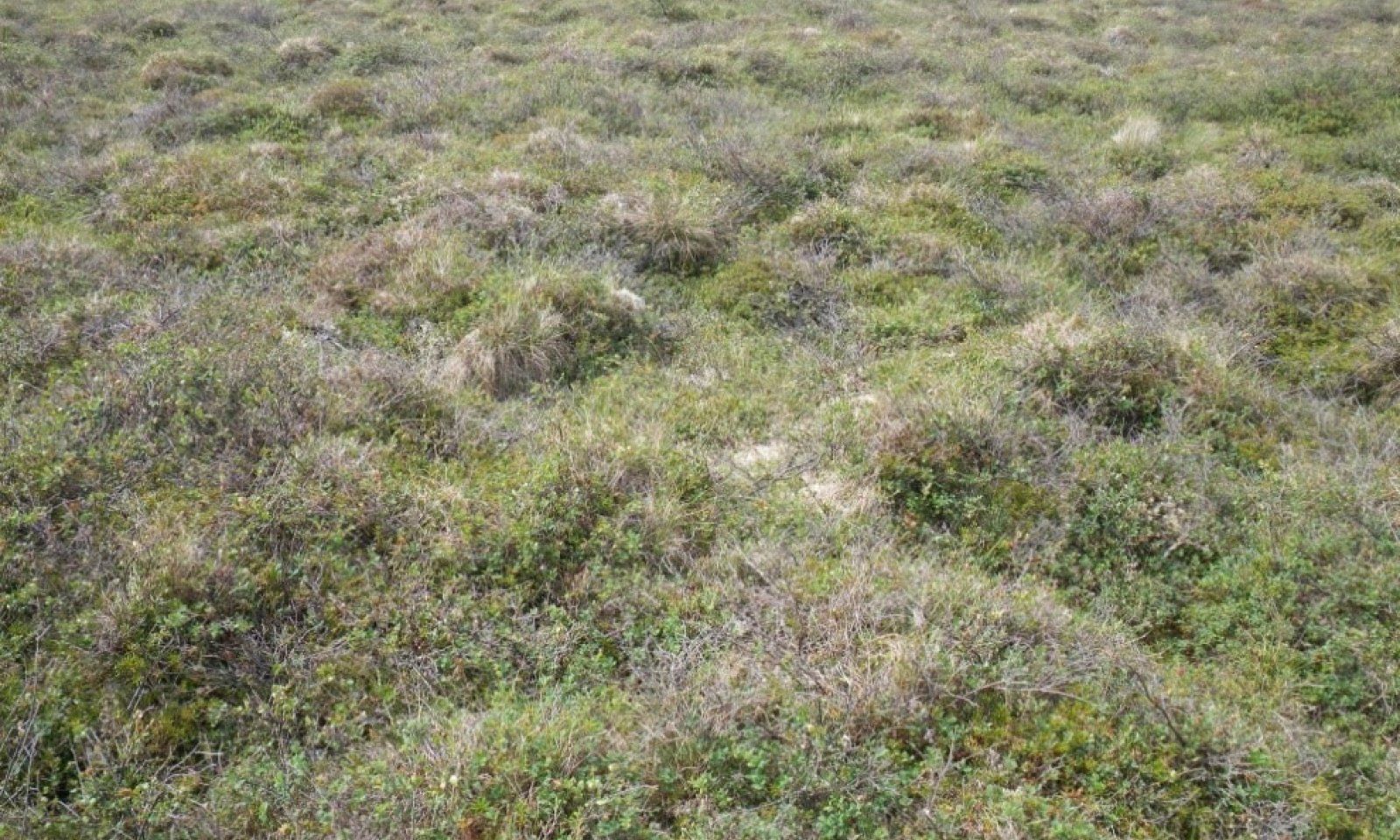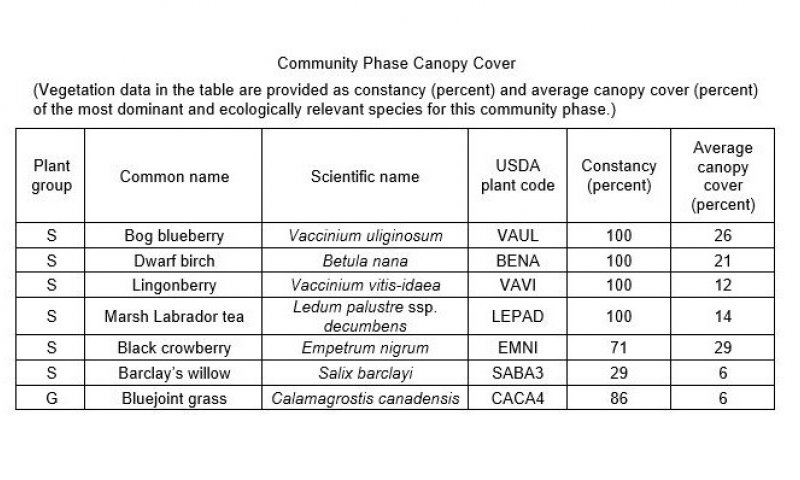

Natural Resources
Conservation Service
Ecological site R236XY156AK
Subarctic Ericaceous Scrub Loamy Terraces
Last updated: 2/13/2024
Accessed: 12/22/2025
General information
Provisional. A provisional ecological site description has undergone quality control and quality assurance review. It contains a working state and transition model and enough information to identify the ecological site.
MLRA notes
Major Land Resource Area (MLRA): 236X–Bristol Bay-Northern Alaska Peninsula Lowlands
The Bristol Bay-Northern Alaska Peninsula Lowland Major Land Resource Area (MLRA 236) is located in Western Alaska. This MLRA covers approximately 19,500 square miles and is defined by an expanse of nearly level to rolling lowlands, uplands and low to moderate hills bordered by long, mountain footslopes. Major rivers include the Egegik, Mulchatna, Naknek, Nushagak, and Wood River. MLRA 236 is in the zone of discontinuous permafrost. It is primarily in areas with finer textured soils on terraces, rolling uplands and footslopes. This MLRA was glaciated during the early to middle Pleistocene. Moraine and glaciofluvial deposits cover around sixty percent of the MLRA. Alluvium and coastal deposits make up a large portion of the remaining area (Kautz et al., 2012; USDA, 2006).
Climate patterns across this MLRA shift as one moves away from the coast. A maritime climate is prominent along the coast, while continental weather, commonly associated with Interior Alaska, is more influential inland. Across the MLRA, summers are general short and warm while winters are long and cold. Mean annual precipitation is 13 to 50 inches, with increased precipitation at higher elevations and areas away from the coast. Mean annual temperatures is between 30 and 36 degrees F (USDA, 2006).
The Bristol Bay-Northern Alaska Peninsula MLRA is principally undeveloped wilderness. Federally managed land includes parts of the Katmai and Aniakchak National Parks, and the Alaska Peninsula, Becharof, Togiak and Alaska Maritime National Wildlife Refuges. The MLRA is sparsely populated. Principal communities include Dillingham, Naknek, and King Salmon. Commercial fishing in Bristol Bay and the Bering Sea comprises a major part of economic activity in the MLRA. Other land uses include subsistence activities (fishing, hunting, and gathering) and sport hunting and fishing (USDA, 2006).
Classification relationships
Alaska Vegetation Classification:
Open low scrubland (II.C.2 - level III) / Mesic shrub birch – ericaceous shrubland (II.C.2.c - level IV)
(Viereck et al., 1992)
Ecological site concept
This ecological site is on non-forested flood plain terraces. Site elevation is between 30 and 850 feet above sea level. Slopes are nearly level (0 - 1 percent). Soil hydrology, strongly acidic soil pH, and soil and air temperature shape the vegetation on this landform. Year round ponding and aquic conditions in the soil restrict vegetation. Low acidity reduces available soil nutrients. This site is usually too wet and too cold to support trees. However, white spruce and black spruce may be present at lower elevations and in downriver areas of this site.
The reference state supports one community. The reference plant community is characterized as a mesic birch - ericaceous shrubland (Viereck et al., 1992). It is composed of dwarf birch, various ericaceous shrubs, and a sparse population of graminoids and forbs atop mossy ground cover. This site is usually too wet and too cold to support trees. However, white spruce and black spruce may be present at lower elevations and in downriver locations of this site.
Associated sites
| R236XY121AK |
Boreal Tall Scrub Loamy Flood Plains R236XY121AK describes valley flood plain talfs. R236XY156AK describes the higher elevated terrace treads in the valley system. This site is usually too wet and too cold to support trees. However, white spruce and black spruce may be present at lower elevations and in downriver areas of this site. |
|---|---|
| F236XY165AK |
Boreal Woodland Loamy Stream Terraces F236XY165AK describes the similar terrace tread landform but it is located in the forested boreal zone. The absence of trees distinguished R236XY156AK from that site. |
| R236XY144AK |
Subarctic Scrub Peat Terraces R236XY144AK is wetter site in the depressions on the terrace tread described by R236XY156AK. |
Similar sites
| F236XY165AK |
Boreal Woodland Loamy Stream Terraces Both site are on similar terrace treads. F236XY165AK is a boreal site and supports trees, unlike R236XY156AK. In the large ecotonal zone between boreal and Western Alaska maritime climates, there may be some overlap between these sites. A determination can be made based on the presence or absence of trees. |
|---|
Table 1. Dominant plant species
| Tree |
Not specified |
|---|---|
| Shrub |
(1) Betula nana |
| Herbaceous |
(1) Calamagrostis canadensis |
Click on box and path labels to scroll to the respective text.

